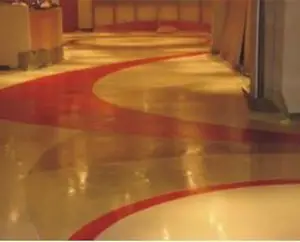Concrete has the ability to take on any number of shapes, patterns, designs or textures if done right. It also has the ability to take on a wealth of color to further add to its decorativeness. Colored concrete is taking over plain old concrete fast because of its diversity in providing a decorative area. There are many ways to color concrete and get your desired results. Different methods of coloring provide for different end results.

Here are 5 methods to color concrete described below:
1. Integral coloring
With integral coloring, the desired color is added onto the concrete during the mixing process in a bid to product uniform color concrete. It comes in either liquid or powder form and can only be utilized on new installations. The upside with integral coloring is that since the color is mixed all through the concrete, chances of it chipping away, wearing off or fading are non-existent. The downside though is that you will not get intense colors, you will only get primary earth tones such as browns, grays, tans, subtle reds as well as very subtle greens and blues.
2. Shake-On Color
With this method, the color and hardening agents are applied by hand just before the concrete hardens when it has been placed. The finely-ground pigments and dry cement that make up the shake-on colors are broadcast onto the freshly placed concrete. It will then bond into place thanks to the bleed water present on the recently placed color concrete. The downside of this method is that with polishing or grinding, the color is bound to be removed since the pigments are concentrated in the top layer.
3. Acid stains
Acid stains are only applied to already hardened concrete and are ideal for use on walls, interior floors and countertops. With acid stains, both new and old concrete can be utilized and they have the ability of producing permanent color that is UV stable thanks to their ability to penetrate the surface of the concrete. It is important to follow proper safety precautions while utilizing this method since it tends to be hazardous in nature. Ensure that the area to be stained is properly ventilated and that there is no nearby source of fire that could cause flash fires. When the staining is done, it is recommended that you neutralize and thoroughly rinse off the color concrete to ensure that any excess acid is removed.
4. Concrete Dyes
Concrete dyes are either water-based or acetone-based. Acetone based dyes are not an ideal choice to color concrete in most occupied spaces since they tend to give off an odor and are toxic by nature. As such, such dyes are meant to be used in properly ventilated areas with a respirator worn. These dyes are also not UV stable meaning that they are capable of fading with time. Water-based dyes on the other hand are not only easy to apply, but are odorless, safe and dry quickly. They are also not UV stable and in order to lock in the color, protective coating must be utilized.
5. Color Hardener
With the color hardener, more wear resistance is realized in addition to being less vulnerable to moisture. This color concrete method is almost similar to shake-on colors because it too is surface treatment.

